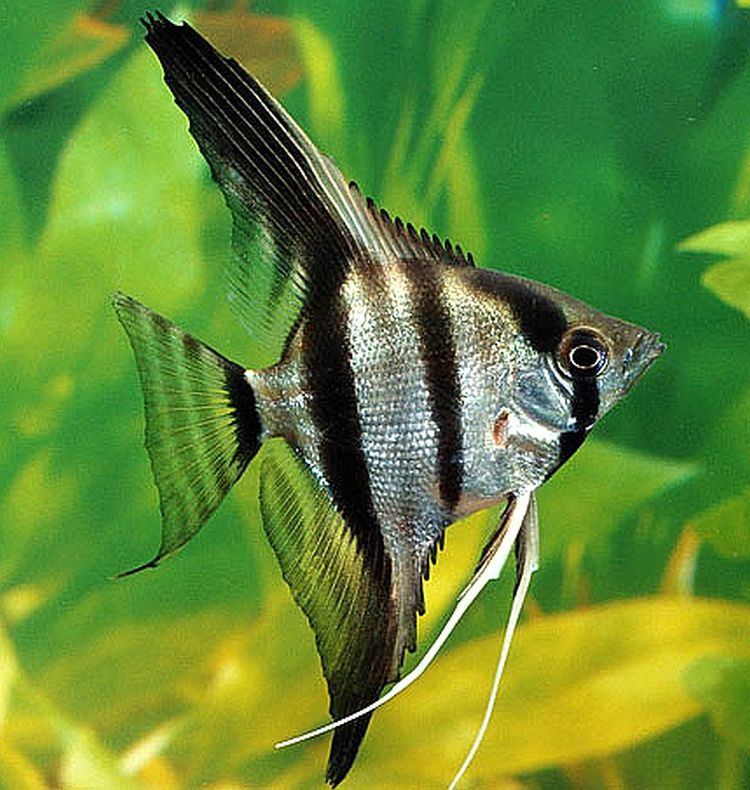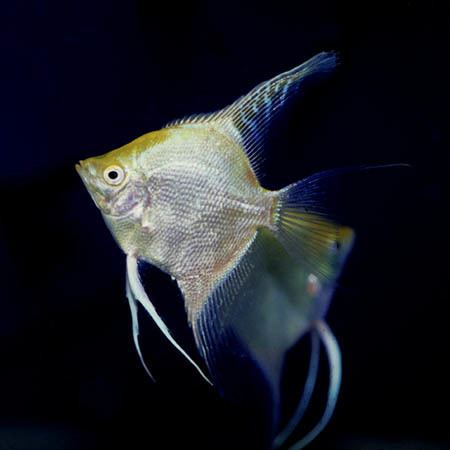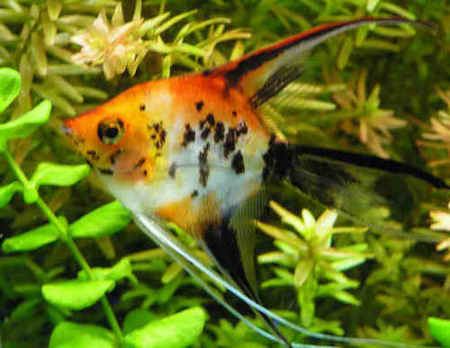Order Perciformes Higher classification Angelfishes | Scientific name Pterophyllum scalare Rank Species | |
 | ||
Similar Discus, Cichlid, Neon tetra, Guppy, Southern platyfish | ||
Silver angelfish caring for fry angelfish babies angelfish breeding pterophyllum scalare
Pterophyllum scalare, most commonly referred to as angelfish or freshwater angelfish, is the most common species of Pterophyllum kept in captivity. It is native to the Amazon Basin in Peru, Colombia, and Brazil. Particularly to the Ucayali river in Peru, the Oyapock River in French Guiana, the Essequibo River in Guyana, the Solimões, the Amapá, and the Amazon rivers in Brazil. It is found in swamps or flooded grounds where vegetation is dense and the water is either clear or silty. Its native water conditions range from a pH of 6.0 to 7.0, a water hardness range of 3 to 10 °dH, and water temperature ranging from 26 to 30 °C (75 to 86 °F). This is the species of angelfish most frequently found in the aquarium trade. A similar (cross-breeding possible) P. scalare exists in the Orinoco. They are of the same size and shape, the only difference being its stripes: the Orinoco P. scalare has thinner, but dual stripes.
Contents
- Silver angelfish caring for fry angelfish babies angelfish breeding pterophyllum scalare
- Aquascaping lab pterophyllum scalare angel fish description scalare pesce angelo descrizione
- References

As in many aquarium fishes, inbreeding is a problem. All strange colours are due to heavy inbreeding. In the wild this species is as strong as most other cichlids of similar weight, but strong individuals are very rare in today's aquarium trade. Hence P. scalare should not be kept together with other South American cichlids. If the water isn't "hard" (max. 10 dGH, pH-level matters less for breeding, but should always be between 6.0 and 7.5), this fish breeds very easily after raising the temperature (typically from 26–27 °C to 29–30 °C), but eggs may die and their fry are extremely sensitive to water changes of all kinds for several weeks. If eggs are laid in a separate tanks, many may survive if part of the water is changed daily but very slowly. Ideally changing 10 to 15% every day, adding the fresh water over a period of an hour or longer. Check pH of tap water, around 8 is OK. Use a thin hose from a bucket placed above the tank. Remove parents and feed with frozen red bloodworms that are graded with a very sharp blade (the result must be a "micronized mess") – otherwise use special liquid found in the trade.
First described by Liechtenstein in 1823, First import to Europe (Germany) by C.Ziggelkow, Hamburg in 1909
Aquascaping lab pterophyllum scalare angel fish description scalare pesce angelo descrizione


